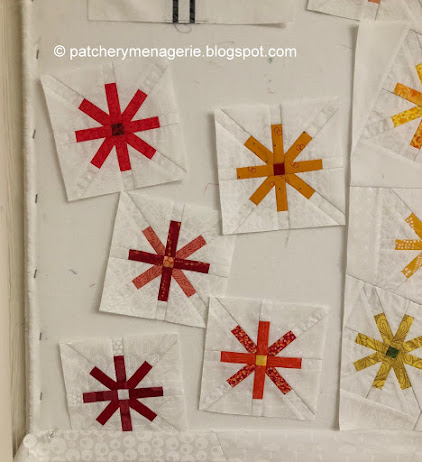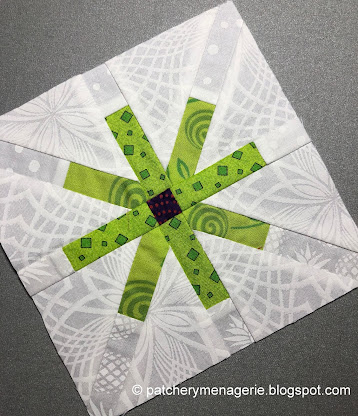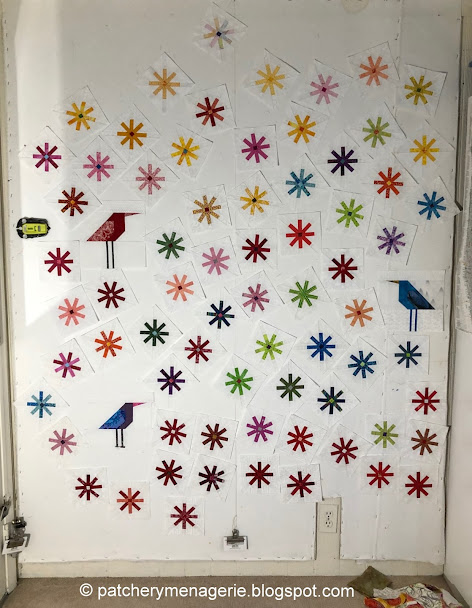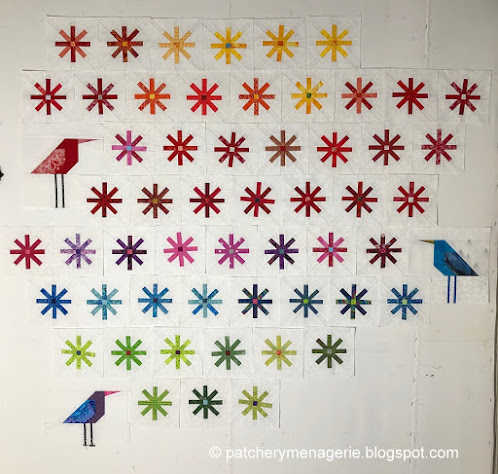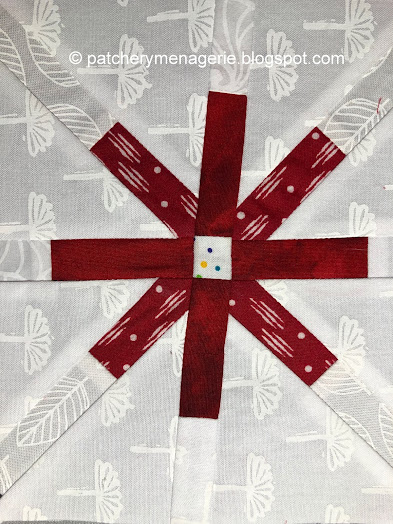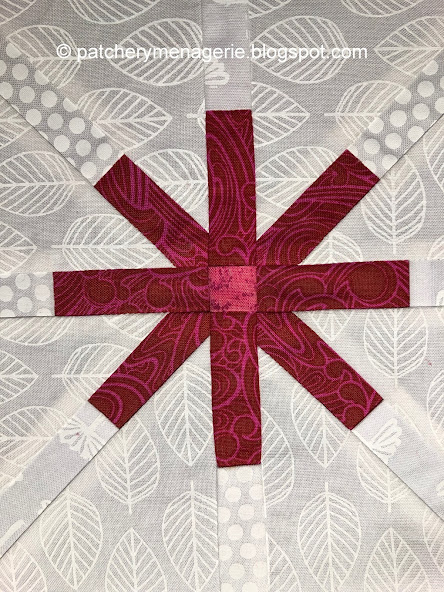I hate having edges of my blocks or panels on the bias, so when I have to add fabric to these blocks, I really try to make sure my edges are on the straight of the grain. So complicated, and fussy though this is, I added this bit of fabric so the bottom edge is on the straight of the grain.
On this block, all four sides are on the straight of the grain.
This is what I have so far. This is not easy. This is Hard.
This is the purplish block in my drawing above. Putting these five together took more than six hours, and I ripped seams apart more than once. It is NOT exactly what is shown in my sketch above, but it's close enough, and still conveys the feeling I wanted to convey, so it's OK.
Annie, in her comment yesterday, wanted to look at "a tutorial on how you do [it.]"
When you have completely internalized how to do a task, you do it without thinking. So to ask me to explain this I really do have to stop and think. Remember I went to Art School and I know how to draw. I can literally draw anything I want and have it look real. Knowing how to draw not only means learning to see, but it means learning how to measure with your eyes. I don't translate what I see in things like inches, but I can translate the shapes I see on my design wall (or in my sketch above) and reproduce them in the fabric in front of me. What I am really reproducing here is the "negative space," or the shape of the spaces between the things (asterisks).
In the sketch above, what's colored is what I have sewn together. See the tall thin green shape up there?
Using that part of the design, this is what the end result looks like. I had to add something to the bottom of the bottom asterisk, so I did that. Then I had to figure out the position of the top asterisk, and add fabric to the sides of that. Then I had to figure out the angle of the top asterisk, which is slightly tilted. Then I had to figure out how much space there was between the two. Then I sewed them together. Then I had to add space at the top. I trimmed down the extra space (making sure I left a seam allowance all the way around).
That is "all" there is to it. And yes, I am well aware this is well beyond the skill of even the most advanced quilter. But you must remember I have been drawing and measuring with my eyes, for over 50 years. So while this is certainly hard, and tricky, and complicated, and frustrating, for me it is not intimidating.
My friend Julie said once that "You persist with an idea well beyond the time when most of us would have run screaming from the room." I'm persistent too. I have set myself up with this challenge, and I will solve it.
Now IF I have done it right, then each finished panel will look like the appropriate section in my sketch above. There are 22 sections in the quilt. If I sew each of them as accurately
as I can, then my finished quilt will so closely resemble my original
layout that nobody will know the difference, and the feeling of
asterisks floating away on the wind will be achieved.
